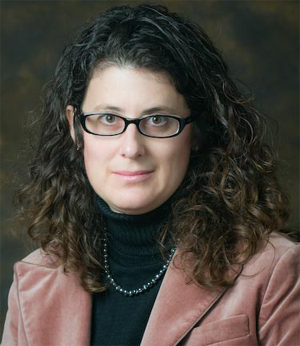Three scientists who use the U.S. Department of Energy’s Advanced Photon Source (APS) at Argonne National Laboratory are recipients of prestigious Protein Society of America awards for 2021.

Petra Fromme (Arizona State University) is recipient of the 2021 Christian B. Anfinsen Award, sponsored by The Protein Society. This award recognizes technological achievement or significant methodological advances in the field of protein science. Fromme, who is co-author on 20 peer reviewed journal publications based on research at the APS, is a world leader in developing and applying novel technology for determining the structures of proteins, including the most challenging among them: membrane proteins. She has led this field by assembling a large network of collaborators spanning chemistry, physics, data science, biology, materials science, and engineering to pioneer the method of serial femtosecond crystallography, which is used to collect snapshots of molecules in action. She has made important contributions to the structural biology of large membrane protein complexes, especially those involved in light capture and energy conversion.

Janet Smith (University of Michigan) is the recipient of the 2021 Dorothy Crowfoot Hodgkin Award, sponsored by Genentech, which is granted in recognition of contributions in protein science that profoundly influence our understanding of biology. Smith is the scientific director of the National Institute of General Medical Sciences and National Cancer Institute structural biology facility at the APS and is co-author on 60 peer reviewed journal publications based on research at the APS. She is recognized for exceptional contributions to our understanding of the biological function of proteins through knowledge of their 3D structures. In major studies of natural-product biosynthetic enzymes, she demonstrated how macrolactones form, how biosynthetic assembly lines function, and how nature has adapted enzymes from primary metabolism for surprising chemical transformations such as cyclopropane formation. Her recent investigations of viral proteins and host antiviral proteins led to an understanding of how the flavivirus NS1 protein increases the virulence of dengue and Zika viruses, and how the zinc-finger antiviral protein recognizes viral RNA.

Amy Rosenzweig (Northwestern University) and Toshiya Endo (Kyoto Sangyo University are co-recipients of the 2021 Hans Neurath Award, sponsored by the Hans Neurath Foundation. This award honors individuals who have made a recent contribution of exceptional merit to basic protein research. Rosenzweig is co-author on 22 peer reviewed journal publications based on research at the APS. She is a preeminent protein biochemist who tackles problems at the forefront of bioinorganic chemistry. Her lab studies metal-dependent methane oxidation, oxygen activation, and metal uptake and transport using structural, spectroscopic, biochemical, genetic, and bioinformatics approaches. Her contributions characterizing the membrane-bound methane monooxygenase have inspired new ways to harness the energy of methane, a potent greenhouse gas, as an alternative liquid fuel source. Other work from Professor Rosenzweig on copper uptake may hold therapeutic potential in Wilson’s disease, a genetic disorder leading to copper overload in humans.
The original Protein Society press release can be read here.
The Protein Society (TPS) is a not-for-profit scholarly society. Since 1985, TPS has served as the intellectual home of investigators across all disciplines - and from around the world - involved in the study of protein structure, function, and design. TPS provides forums for scientific collaboration and communication and supports professional growth of young investigators through workshops, networking opportunities, and by encouraging junior researchers to participate fully in the Annual Symposium. As well as the meeting, the Society’s prestigious journal Protein Science, edited by Brian Matthews, serves as an ideal platform for furthering the science of proteins in the broadest possible sense.
The Advanced Photon Source is a U.S. DOE Office of Science User Facility operated for the DOE Office of Science by Argonne National Laboratory under contract no. DE-AC02-06CH11357.
The U.S. Department of Energy's APS is one of the world’s most productive x-ray light source facilities. Each year, the APS provides high-brightness x-ray beams to a diverse community of more than 5,000 researchers in materials science, chemistry, condensed matter physics, the life and environmental sciences, and applied research. Researchers using the APS produce over 2,000 publications each year detailing impactful discoveries, and solve more vital biological protein structures than users of any other x-ray light source research facility. APS x-rays are ideally suited for explorations of materials and biological structures; elemental distribution; chemical, magnetic, electronic states; and a wide range of technologically important engineering systems from batteries to fuel injector sprays, all of which are the foundations of our nation’s economic, technological, and physical well-being.
Argonne National Laboratory seeks solutions to pressing national problems in science and technology. The nation's first national laboratory, Argonne conducts leading-edge basic and applied scientific research in virtually every scientific discipline. Argonne researchers work closely with researchers from hundreds of companies, universities, and federal, state and municipal agencies to help them solve their specific problems, advance America's scientific leadership and prepare the nation for a better future. With employees from more than 60 nations, Argonne is managed by UChicago Argonne, LLC, for the U.S. DOE Office of Science.
The U.S. Department of Energy's Office of Science is the single largest supporter of basic research in the physical sciences in the United States and is working to address some of the most pressing challenges of our time. For more information, visit the Office of Science website.
